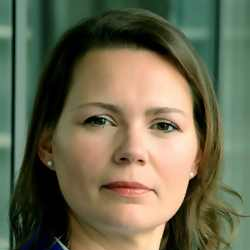Sustainable Decision Making in Civil and Construction Engineering
A special issue of Sustainability (ISSN 2071-1050). This special issue belongs to the section "Sustainable Engineering and Science".
Deadline for manuscript submissions: closed (26 March 2023) | Viewed by 12567
Special Issue Editor
Interests: civil engineering; construction; technology; processes; MCDM; risk
Special Issues, Collections and Topics in MDPI journals
Special Issue Information
Dear Colleagues,
In contemporary civil construction engineering, sustainable and rational solutions to problems are of utmost importance. In turn, sustainable solutions demand decision-making models, while decision-making models assume that decision-makers make choices that maximise benefits and minimise losses, considering sustainability aspects. Sustainability-centred decision-making in civil and construction engineering assumes the use of resources, rationally organised processes, the cost of minimisation, the optimised project duration, the best quality of the product, etc. New and emerging risks can be detected for the identification of an individual situation, problem formulation and analysis, modelling, development of problem-solving processes, methodology design, analysis of the condition, calculation, checking and comparison of results and making the final decision.
Problem evaluation attributes are selected considering the interests and goals of an object or process, as well as factors that influence decision-process efficiency and value creation with sustainability aspects. Traditionally, decision making needs to consider several different criteria; therefore, multicriteria decision making (MCDM) approaches with hybrid, extended or modified decision-making methods are used while considering sustainability aspects for this purpose.
This Special Issue welcomes articles that offer technical and environmental, economic and social benefits from civil and construction engineering solutions involving various decision-making methods, methodologies, models, algorithms and tools and decision support systems including sustainability aspects. Complex, interdisciplinary approaches are welcome. Papers that discuss solutions of specific problems in a wider context are also welcome.
Dr. Jolanta Tamošaitienė
Guest Editor
Manuscript Submission Information
Manuscripts should be submitted online at www.mdpi.com by registering and logging in to this website. Once you are registered, click here to go to the submission form. Manuscripts can be submitted until the deadline. All submissions that pass pre-check are peer-reviewed. Accepted papers will be published continuously in the journal (as soon as accepted) and will be listed together on the special issue website. Research articles, review articles as well as short communications are invited. For planned papers, a title and short abstract (about 100 words) can be sent to the Editorial Office for announcement on this website.
Submitted manuscripts should not have been published previously, nor be under consideration for publication elsewhere (except conference proceedings papers). All manuscripts are thoroughly refereed through a single-blind peer-review process. A guide for authors and other relevant information for submission of manuscripts is available on the Instructions for Authors page. Sustainability is an international peer-reviewed open access semimonthly journal published by MDPI.
Please visit the Instructions for Authors page before submitting a manuscript. The Article Processing Charge (APC) for publication in this open access journal is 2400 CHF (Swiss Francs). Submitted papers should be well formatted and use good English. Authors may use MDPI's English editing service prior to publication or during author revisions.
Keywords
- civil
- construction
- engineering
- multicriteria decision making
- processes
- modelling
- sustainability
- assessment





